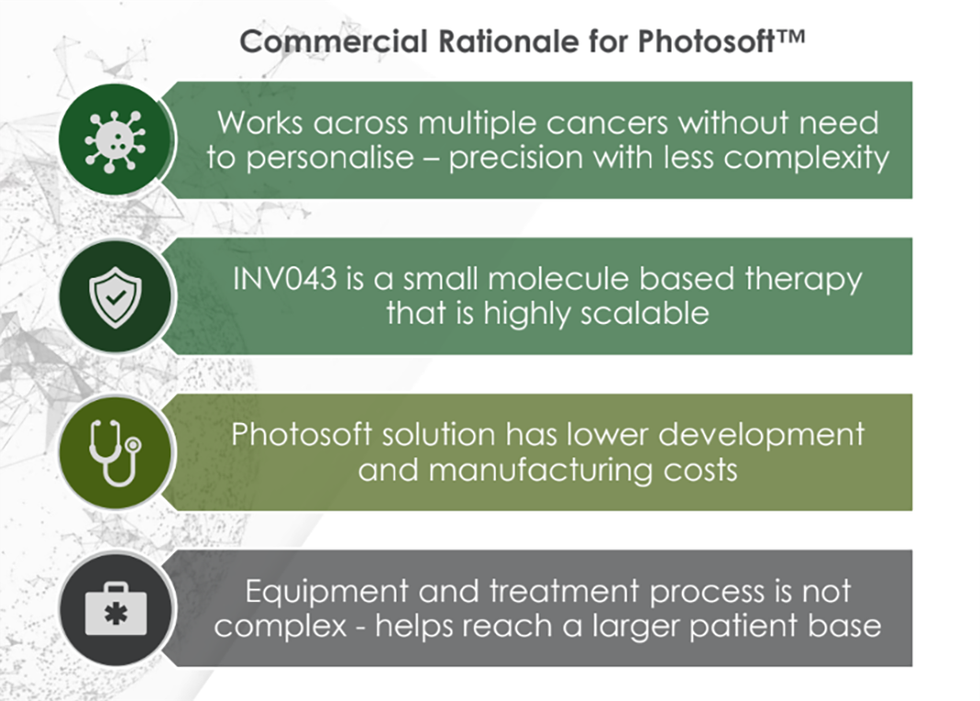Five-year follow-up of the Phase 3 PAOLA-1 trial showed LYNPARZA plus bevacizumab provided a clinically meaningful improvement in overall survival in a subgroup of HRD-positive patients, with 65.5% of patients still alive versus 48.4% who received bevacizumab and placebo
The Phase 3 SOLO-1 trial demonstrated 67% of advanced ovarian cancer patients with BRCA mutations receiving LYNPARZA were alive at seven years versus 47% of placebo patients, the longest follow-up for any PARP inhibitor in this setting
AstraZeneca and Merck, known as MSD outside of the United States and Canada, today announced long-term follow-up results from the Phase 3 PAOLA-1 and SOLO-1 trials in first-line advanced ovarian cancer, which represent the longest-term data for any PARP inhibitor in this setting.
These results were presented on Sept. 9 at the European Society for Medical Oncology (ESMO) 2022 Congress, and the SOLO-1 results were published in the Journal of Clinical Oncology .
Ovarian cancer is one of the most common gynecologic cancers and has the worst prognosis and highest mortality rate. More than two-thirds of patients with ovarian cancer are diagnosed with advanced disease, and approximately 50-70% of these patients die within five years. Roughly half of patients with advanced ovarian cancer have homologous recombination deficiency (HRD)-positive tumors, including those with a BRCA mutation, and one in four women have a BRCA mutation.
Five-year follow-up and final OS results from Phase 3 PAOLA-1 trial (abstract #LBA29)
The Phase 3 PAOLA-1 trial evaluated LYNPARZA in combination with bevacizumab as first-line maintenance therapy in patients with advanced ovarian cancer, who were without evidence of disease after surgery or following response to platinum-based chemotherapy. Final overall survival (OS), a key secondary endpoint, in those who received LYNPARZA plus bevacizumab was 56.5 months versus 51.6 months with bevacizumab alone (HR=0.92 [95% CI, 0.76-1.12]; p=0.4118) in patients with newly diagnosed advanced ovarian cancer. These OS results were not statistically significant.
In an exploratory subgroup analysis of HRD-positive patients, LYNPARZA plus bevacizumab provided a clinically meaningful improvement in OS, reducing the risk of death by 38% (HR=0.62 [95% CI, 0.45-0.85]) versus bevacizumab alone. 65.5% of patients who received LYNPARZA plus bevacizumab were still alive at five years versus 48.4% who received bevacizumab alone. LYNPARZA plus bevacizumab also improved median progression-free survival (PFS) to nearly four years (46.8 months) versus 17.6 months with bevacizumab plus placebo, and 46.1% of patients who received LYNPARZA in combination with bevacizumab remain progression free versus 19.2% of patients who received bevacizumab alone. The safety and tolerability profile of LYNPARZA in this trial was in line with that observed in prior clinical trials, with no new safety signals. Adverse events of special interest for LYNPARZA in combination with bevacizumab versus bevacizumab alone included myelodysplastic syndrome/acute myeloid leukemia/aplastic anemia (1.7% vs. 2.2%), new primary malignancies (4.1% vs. 3.0%) and pneumonitis/interstitial lung disease/bronchiolitis (1.3% vs. 0.7%).
Seven-year follow-up from Phase 3 SOLO-1 trial (abstract #517O)
The Phase 3 SOLO-1 trial evaluated LYNPARZA as monotherapy as first-line maintenance therapy in patients with advanced ovarian cancer, who were without evidence of disease after surgery or following response to platinum-based chemotherapy. In the trial, LYNPARZA demonstrated a clinically meaningful improvement in OS versus placebo in patients with germline BRCA -mutated (g BRCA m) newly diagnosed advanced ovarian cancer, reducing the risk of death by 45% (HR=0.55 [95% CI, 0.40-0.76]; p=0.0004) versus placebo (not statistically significant). Median OS was not reached with LYNPARZA versus 75.2 months with placebo. At the seven-year descriptive OS analysis, 67% of LYNPARZA patients were alive versus 47% of placebo patients (44% of whom had a subsequent PARP inhibitor), and 45% of LYNPARZA patients versus 21% of placebo patients were alive and had not received a first subsequent treatment.
Additional data showed median time to first subsequent therapy (TFST) was 64.0 months with LYNPARZA versus 15.1 months with placebo. The safety and tolerability profile of LYNPARZA in this trial was in line with that observed in prior clinical trials, with no new safety signals. The most common treatment-emergent adverse events (≥20%) were nausea (78%), fatigue (64%), vomiting (40%), anemia (40%), diarrhea (35%), arthralgia (29%), constipation (28%), abdominal pain (26%), headache (23%), neutropenia (23%), dysgeusia (22%), dizziness (20%) and decreased appetite (20%).
Please see Important Safety Information for LYNPARZA after the "About SOLO-1" section below.
Professor Isabelle Ray-Coquard, principal investigator from the PAOLA-1 trial and president of the GINECO group said, "For women facing an advanced ovarian cancer diagnosis who are HRD-positive, a targeted treatment in the first-line maintenance setting is critical to helping them live longer . These latest results at the five-year landmark demonstrate that olaparib with bevacizumab reduces the risk of death by 38% in HRD-positive patients compared to bevacizumab alone, further reinforcing the clinically meaningful long-term survival benefit of this combination. This should be promising news for both clinicians and patients, as we see these additional data show that this combination may allow patients more time with family and loved ones. These results also highlight the importance of biomarker testing as part of a precision medicine approach to guide treatment decisions in ovarian cancer patients."
Professor Paul Di Silvestro, investigator from the SOLO-1 trial and director of the program in women's oncology at Women and Infants Hospital in Providence, Rhode Island, said, "The long-term results from SOLO-1 confirm that LYNPARZA continues to elicit a clinically meaningful improvement in overall survival in the first-line maintenance setting for more than seven years. Achieving long-term survival for patients with newly diagnosed advanced ovarian cancer is critical because the first-line setting offers the greatest potential to impact patient survival."
Susan Galbraith, executive vice president, oncology R&D, AstraZeneca, said, "Historically, the five-year survival rate of newly diagnosed patients with advanced ovarian cancer is 30-50%. In that context, it is phenomenal to share the long-term overall survival data from both PAOLA-1 and SOLO-1, with two out of three patients still alive in these trials. We continue to believe in LYNPARZA's ability to help biomarker-selected patients with advanced ovarian cancer to achieve better outcomes."
Dr. Eliav Barr, senior vice president, head of global clinical development and chief medical officer, Merck Research Laboratories, said, "These latest data from the PAOLA-1 and SOLO-1 trials further highlight the importance of HRD testing, including for BRCA 1/2 mutations, for all newly diagnosed advanced ovarian cancer patients at the point of diagnosis. Maintenance therapy with LYNPARZA may provide certain patients with HRD-positive or BRCA -mutated advanced ovarian cancer the opportunity to live longer."
Summary of PAOLA-1 & SOLO-1 results
PAOLA-1 | ||
LYNPARZA + | Placebo + | |
OS 1 | ||
Number of patients with events (%) | 288 (53.6) | 158 (58.7) |
Median OS (in months) | 56.5 | 51.6 |
HR (95% CI) | 0.92 (0.76,1.12) | |
OS by HRD status 2 | ||
HRD positive (including t BRCA m) | ||
Number of patients randomized | 255 | 132 |
Number of patients with events (%) | 93 (36.5) | 69 (52.3) |
Median OS (in months) | 75.2 | 57.3 |
HR (95% CI) | 0.62 (0.45, 0.85) | |
HRD positive (excluding t BRCA m) | ||
Number of patients randomized | 97 | 55 |
Number of patients with events (%) | 44 (45.4) | 32 (58.2) |
Median OS (in months) | Not reached | 52.0 |
HR (95% CI) | 0.71 (0.45, 1.13) | |
BRCA m | ||
Number of patients randomized | 157 | 80 |
Number of patients with events (%) | 48 (30.6) | 37 (46.3) |
Median OS (in months) | 75.2 | 66.9 |
HR (95% CI) | 0.60 (0.39, 0.93) | |
HRD negative | ||
Number of patients randomized | 192 | 85 |
Number of patients with events (%) | 140 (72.9) | 58 (68.2) |
Median OS (in months) | 36.8 | 40.4 |
HR (95% CI) | 1.19 (0.88, 1.63) | |
PFS 3 by HRD status 2 | ||
HRD positive (including t BRCA m) | ||
Number of patients randomized | 255 | 132 |
Number of patients with events (%) | 136 (53.3) | 104 (78.8) |
Median OS (in months) | 46.8 | 17.6 |
HR (95% CI) | 0.41 (0.32, 0.54) | |
| 1. OS analysis was done at 56% maturity (448 events in 797 patients) and boundary for significance 0.0001; statistical significance not reached. | ||
| 2. Exploratory subgroup analysis by HRD status. The HRD status of patients was determined from post-randomization testing of tumor samples using the Myriad myChoice HRD plus test. | ||
| 3. Investigator-assessed PFS (RECIST 1.1) | ||
SOLO-1 | ||
LYNPARZA | Placebo | |
OS 1 | ||
Number of patients with events (%) | 84 (32.2) | 65 (49.6) |
Median OS (in months) | Not reached | 75.2 |
HR (95% CI) | 0.55 (0.40, 0.76) | |
TFST | ||
Number of patients with events (%) | 135 (51.9) | 98 (74.8) |
Median OS (in months) | 64.0 | 15.1 |
HR (95% CI) | 0.37 (0.28, 0.48) | |
Time to second subsequent therapy (TSST) | ||
Number of patients with events (%) | 110 (42.3) | 80 (61.1) |
Median TSST (in months) | 93.2 | 40.7 |
HR (95% CI) | 0.5 (0.37, 0.67) | |
1. OS analysis was done at 38.1% maturity (149 events in 391 patients) and boundary for significance 0.01; statistical significance not reached. Survival follow-up continues, and further analyses were planned. | ||
2. P | ||
LYNPARZA is approved as maintenance treatment of platinum-sensitive relapsed ovarian cancer and as both monotherapy and in combination with bevacizumab for the first-line maintenance treatment of BRCA m and HRD-positive advanced ovarian cancer, respectively. Select patients for therapy based on an FDA-approved companion diagnostic for LYNPARZA.
About PAOLA-1
PAOLA-1 is a Phase 3, double-blinded trial evaluating the efficacy and safety of LYNPARZA added to standard-of-care bevacizumab versus bevacizumab alone as a first-line maintenance treatment for patients with newly diagnosed advanced FIGO stage III-IV high-grade serous or endometroid ovarian, fallopian tube or peritoneal cancer who had a complete or partial response to first-line treatment with platinum-based chemotherapy and bevacizumab. AstraZeneca and Merck announced in August 2019 that the trial met its primary endpoint of PFS in the overall trial population.
PAOLA-1 is an ENGOT (European Network of Gynaecological Oncological Trial groups) trial, sponsored by ARCAGY Research (Association de Recherche sur les CAncers dont GYnécologiques) on behalf of GINECO (Groupe d'Investigateurs National des Etudes des Cancers Ovariens et du sein). ARCAGY-GINECO is an academic group specializing in clinical and translational research in patients' cancers and a member of the GCIG (Gynecologic Cancer InterGroup).
About SOLO-1
SOLO-1 is a Phase 3, randomized, double-blinded, placebo-controlled, multicenter trial to evaluate the efficacy and safety of LYNPARZA (300 mg twice daily) as maintenance monotherapy compared with placebo in newly diagnosed patients with advanced BRCA m ovarian cancer following platinum-based chemotherapy. The trial randomized 391 patients with a deleterious or suspected deleterious BRCA 1 or BRCA 2 mutation who were in clinical complete or partial response following platinum-based chemotherapy. Patients were randomized (2:1) to receive LYNPARZA or placebo for up to two years or until disease progression (at the investigator's discretion). The primary endpoint was PFS, and key secondary endpoints included time to second disease progression or death, TFST and OS. AstraZeneca and Merck announced in June 2018 that the trial met its primary endpoint of PFS in the overall trial population.
IMPORTANT SAFETY INFORMATION
CONTRAINDICATIONS
There are no contraindications for LYNPARZA.
WARNINGS AND PRECAUTIONS
Myelodysplastic Syndrome/Acute Myeloid Leukemia (MDS/AML): Occurred in approximately 1.5% of patients exposed to LYNPARZA monotherapy, and the majority of events had a fatal outcome. The median duration of therapy in patients who developed MDS/AML was 2 years (range: 10 years). All of these patients had previous chemotherapy with platinum agents and/or other DNA-damaging agents, including radiotherapy.
Do not start LYNPARZA until patients have recovered from hematological toxicity caused by previous chemotherapy (≤Grade 1). Monitor complete blood count for cytopenia at baseline and monthly thereafter for clinically significant changes during treatment. For prolonged hematological toxicities, interrupt LYNPARZA and monitor blood count weekly until recovery.
If the levels have not recovered to Grade 1 or less after 4 weeks, refer the patient to a hematologist for further investigations, including bone marrow analysis and blood sample for cytogenetics. Discontinue LYNPARZA if MDS/AML is confirmed.
Pneumonitis: Occurred in 0.8% of patients exposed to LYNPARZA monotherapy, and some cases were fatal. If patients present with new or worsening respiratory symptoms such as dyspnea, cough, and fever, or a radiological abnormality occurs, interrupt LYNPARZA treatment and initiate prompt investigation. Discontinue LYNPARZA if pneumonitis is confirmed and treat patient appropriately.
Embryo-Fetal Toxicity: Based on its mechanism of action and findings in animals, LYNPARZA can cause fetal harm. A pregnancy test is recommended for females of reproductive potential prior to initiating treatment.
Females
Advise females of reproductive potential of the potential risk to a fetus and to use effective contraception during treatment and for 6 months following the last dose.
Males
Advise male patients with female partners of reproductive potential or who are pregnant to use effective contraception during treatment and for 3 months following the last dose of LYNPARZA and to not donate sperm during this time.
Venous Thromboembolic Events: Including pulmonary embolism, occurred in 7% of patients with metastatic castration-resistant prostate cancer who received LYNPARZA plus androgen deprivation therapy (ADT) compared to 3.1% of patients receiving enzalutamide or abiraterone plus ADT in the PROfound study. Patients receiving LYNPARZA and ADT had a 6% incidence of pulmonary embolism compared to 0.8% of patients treated with ADT plus either enzalutamide or abiraterone. Monitor patients for signs and symptoms of venous thrombosis and pulmonary embolism, and treat as medically appropriate, which may include long-term anticoagulation as clinically indicated.
ADVERSE REACTIONS—First-Line Maintenance BRCA m Advanced Ovarian Cancer
Most common adverse reactions (Grades 1-4) in ≥10% of patients who received LYNPARZA in the first-line maintenance setting for SOLO-1 were: nausea (77%), fatigue (67%), abdominal pain (45%), vomiting (40%), anemia (38%), diarrhea (37%), constipation (28%), upper respiratory tract infection/influenza/nasopharyngitis/bronchitis (28%), dysgeusia (26%), decreased appetite (20%), dizziness (20%), neutropenia (17%), dyspepsia (17%), dyspnea (15%), leukopenia (13%), urinary tract infection (13%), thrombocytopenia (11%), and stomatitis (11%).
Most common laboratory abnormalities (Grades 1-4) in ≥25% of patients who received LYNPARZA in the first-line maintenance setting for SOLO-1 were: decrease in hemoglobin (87%), increase in mean corpuscular volume (87%), decrease in leukocytes (70%), decrease in lymphocytes (67%), decrease in absolute neutrophil count (51%), decrease in platelets (35%), and increase in serum creatinine (34%).
ADVERSE REACTIONS—First-Line Maintenance Advanced Ovarian Cancer in Combination with Bevacizumab
Most common adverse reactions (Grades 1-4) in ≥10% of patients treated with LYNPARZA/bevacizumab compared to a ≥5% frequency for placebo/bevacizumab in the first-line maintenance setting for PAOLA-1 were: nausea (53%), fatigue (including asthenia) (53%), anemia (41%), lymphopenia (24%), vomiting (22%) and leukopenia (18%). In addition, the most common adverse reactions (≥10%) for patients receiving LYNPARZA/bevacizumab irrespective of the frequency compared with the placebo/bevacizumab arm were: diarrhea (18%), neutropenia (18%), urinary tract infection (15%) and headache (14%).
In addition, venous thromboembolic events occurred more commonly in patients receiving LYNPARZA/bevacizumab (5%) than in those receiving placebo/bevacizumab (1.9%).
Most common laboratory abnormalities (Grades 1-4) in ≥25% of patients for LYNPARZA in combination with bevacizumab in the first-line maintenance setting for PAOLA-1 were: decrease in hemoglobin (79%), decrease in lymphocytes (63%), increase in serum creatinine (61%), decrease in leukocytes (59%), decrease in absolute neutrophil count (35%) and decrease in platelets (35%).
ADVERSE REACTIONS—Maintenance Recurrent Ovarian Cancer
Most common adverse reactions (Grades 1-4) in ≥20% of patients who received LYNPARZA in the maintenance setting for SOLO-2 were: nausea (76%), fatigue (including asthenia) (66%), anemia (44%), vomiting (37%), nasopharyngitis/upper respiratory tract infection (URI)/influenza (36%), diarrhea (33%), arthralgia/myalgia (30%), dysgeusia (27%), headache (26%), decreased appetite (22%), and stomatitis (20%).
Study 19: nausea (71%), fatigue (including asthenia) (63%), vomiting (35%), diarrhea (28%), anemia (23%), respiratory tract infection (22%), constipation (22%), headache (21%), decreased appetite (21%) and dyspepsia (20%).
Most common laboratory abnormalities (Grades 1-4) in ≥25% of patients who received LYNPARZA in the maintenance setting (SOLO-2/Study 19 ) were: increase in mean corpuscular volume (89%/82%), decrease in hemoglobin (83%/82%), decrease in leukocytes (69%/58%), decrease in lymphocytes (67%/52%), decrease in absolute neutrophil count (51%/47%), increase in serum creatinine (44%/45%), and decrease in platelets (42%/36%).
ADVERSE REACTIONS—Adjuvant Treatment of g BRCA m, HER2-Negative, High-Risk Early Breast Cancer
Most common adverse reactions (Grades 1-4) in ≥10% of patients who received LYNPARZA in the adjuvant setting for OlympiA were: nausea (57%), fatigue (including asthenia) (42%), anemia (24%), vomiting (23%), headache (20%), diarrhea (18%), leukopenia (17%), neutropenia (16%), decreased appetite (13%), dysgeusia (12%), dizziness (11%), and stomatitis (10%).
Most common laboratory abnormalities (Grades 1-4) in ≥25% of patients who received LYNPARZA in the adjuvant setting for OlympiA were: decrease in lymphocytes (77%), increase in mean corpuscular volume (67%), decrease in hemoglobin (65%), decrease in leukocytes (64%), and decrease in absolute neutrophil count (39%).
ADVERSE REACTIONS—g BRCA m, HER2-Negative Metastatic Breast Cancer
Most common adverse reactions (Grades 1-4) in ≥20% of patients who received LYNPARZA in the metastatic setting for OlympiAD were: nausea (58%), anemia (40%), fatigue (including asthenia) (37%), vomiting (30%), neutropenia (27%), respiratory tract infection (27%), leukopenia (25%), diarrhea (21%), and headache (20%).
Most common laboratory abnormalities (Grades 1-4) in > 25% of patients who received LYNPARZA in the metastatic setting for OlympiAD were: decrease in hemoglobin (82%), decrease in lymphocytes (73%), decrease in leukocytes (71%), increase in mean corpuscular volume (71%), decrease in absolute neutrophil count (46%), and decrease in platelets (33%).
ADVERSE REACTIONS—First-Line Maintenance g BRCA m Metastatic Pancreatic Adenocarcinoma
Most common adverse reactions (Grades 1-4) in ≥10% of patients who received LYNPARZA in the first-line maintenance setting for POLO were: fatigue (60%), nausea (45%), abdominal pain (34%), diarrhea (29%), anemia (27%), decreased appetite (25%), constipation (23%), vomiting (20%), back pain (19%), arthralgia (15%), rash (15%), thrombocytopenia (14%), dyspnea (13%), neutropenia (12%), nasopharyngitis (12%), dysgeusia (11%), and stomatitis (10%).
Most common laboratory abnormalities (Grades 1-4) in ≥25% of patients who received LYNPARZA in the first-line maintenance setting for POLO were: increase in serum creatinine (99%), decrease in hemoglobin (86%), increase in mean corpuscular volume (71%), decrease in lymphocytes (61%), decrease in platelets (56%), decrease in leukocytes (50%), and decrease in absolute neutrophil count (25%).
ADVERSE REACTIONS—HRR Gene-mutated Metastatic Castration Resistant Prostate Cancer
Most common adverse reactions (Grades 1-4) in ≥10% of patients who received LYNPARZA for PROfound were: anemia (46%), fatigue (including asthenia) (41%), nausea (41%), decreased appetite (30%), diarrhea (21%), vomiting (18%), thrombocytopenia (12%), cough (11%), and dyspnea (10%).
Most common laboratory abnormalities (Grades 1-4) in ≥25% of patients who received LYNPARZA for PROfound were: decrease in hemoglobin (98%), decrease in lymphocytes (62%), decrease in leukocytes (53%), and decrease in absolute neutrophil count (34%).
DRUG INTERACTIONS
Anticancer Agents: Clinical studies of LYNPARZA with other myelosuppressive anticancer agents, including DNA-damaging agents, indicate a potentiation and prolongation of myelosuppressive toxicity.
CYP3A Inhibitors: Avoid coadministration of strong or moderate CYP3A inhibitors when using LYNPARZA. If a strong or moderate CYP3A inhibitor must be coadministered, reduce the dose of LYNPARZA. Advise patients to avoid grapefruit, grapefruit juice, Seville oranges, and Seville orange juice during LYNPARZA treatment.
CYP3A Inducers: Avoid coadministration of strong or moderate CYP3A inducers when using LYNPARZA.
USE IN SPECIFIC POPULATIONS
Lactation: No data are available regarding the presence of olaparib in human milk, its effects on the breastfed infant or on milk production. Because of the potential for serious adverse reactions in the breastfed infant, advise a lactating woman not to breastfeed during treatment with LYNPARZA and for 1 month after receiving the final dose.
Pediatric Use: The safety and efficacy of LYNPARZA have not been established in pediatric patients.
Hepatic Impairment: No adjustment to the starting dose is required in patients with mild or moderate hepatic impairment (Child-Pugh classification A and B). There are no data in patients with severe hepatic impairment (Child-Pugh classification C).
Renal Impairment: No dosage modification is recommended in patients with mild renal impairment (CLcr 51-80 mL/min estimated by Cockcroft-Gault). In patients with moderate renal impairment (CLcr 31-50 mL/min), reduce the dose of LYNPARZA to 200 mg twice daily. There are no data in patients with severe renal impairment or end-stage renal disease (CLcr ≤30 mL/min).
INDICATIONS for LYNPARZA in the United States
LYNPARZA is a poly (ADP-ribose) polymerase (PARP) inhibitor indicated for:
First-Line Maintenance BRCA m Advanced Ovarian Cancer
For the maintenance treatment of adult patients with deleterious or suspected deleterious germline or somatic BRCA -mutated (g BRCA m or s BRCA m) advanced epithelial ovarian, fallopian tube or primary peritoneal cancer who are in complete or partial response to first-line platinum-based chemotherapy. Select patients for therapy based on an FDA-approved companion diagnostic for LYNPARZA.
First-Line Maintenance HRD-Positive Advanced Ovarian Cancer in Combination with Bevacizumab
In combination with bevacizumab for the maintenance treatment of adult patients with advanced epithelial ovarian, fallopian tube or primary peritoneal cancer who are in complete or partial response to first-line platinum-based chemotherapy and whose cancer is associated with homologous recombination deficiency (HRD) positive status defined by either:
- a deleterious or suspected deleterious BRCA mutation and/or
- genomic instability
Select patients for therapy based on an FDA-approved companion diagnostic for LYNPARZA.
Maintenance Recurrent Ovarian Cancer
For the maintenance treatment of adult patients with recurrent epithelial ovarian, fallopian tube, or primary peritoneal cancer, who are in complete or partial response to platinum-based chemotherapy.
Adjuvant Treatment of g BRCA m, HER2-Negative, High-Risk Early Breast Cancer
For the adjuvant treatment of adult patients with deleterious or suspected deleterious g BRCA m, human epidermal growth factor receptor 2 (HER2)-negative high-risk early breast cancer who have been treated with neoadjuvant or adjuvant chemotherapy. Select patients for therapy based on an FDA-approved companion diagnostic for LYNPARZA.
g BRCA m HER2-Negative Metastatic Breast Cancer
For the treatment of adult patients with deleterious or suspected deleterious g BRCA m , human epidermal growth factor receptor 2 (HER2)-negative metastatic breast cancer, who have been treated with chemotherapy in the neoadjuvant, adjuvant or metastatic setting. Patients with hormone receptor (HR)-positive breast cancer should have been treated with a prior endocrine therapy or be considered inappropriate for endocrine therapy. Select patients for therapy based on an FDA-approved companion diagnostic for LYNPARZA.
First-Line Maintenance g BRCA m Metastatic Pancreatic Cancer
For the maintenance treatment of adult patients with deleterious or suspected deleterious g BRCA m metastatic pancreatic adenocarcinoma whose disease has not progressed on at least 16 weeks of a first-line platinum-based chemotherapy regimen. Select patients for therapy based on an FDA-approved companion diagnostic for LYNPARZA.
HRR Gene-mutated Metastatic Castration Resistant Prostate Cancer
For the treatment of adult patients with deleterious or suspected deleterious germline or somatic homologous recombination repair (HRR) gene-mutated metastatic castration-resistant prostate cancer (mCRPC) who have progressed following prior treatment with enzalutamide or abiraterone. Select patients for therapy based on an FDA-approved companion diagnostic for LYNPARZA.
Please see complete Prescribing Information , including Medication Guide .
About LYNPARZA ® (olaparib)
LYNPARZA is a first-in-class PARP inhibitor and the first targeted treatment to potentially exploit DNA damage response (DDR) pathway deficiencies, such as BRCA mutations, to preferentially kill cancer cells. Inhibition of PARP with LYNPARZA leads to the trapping of PARP bound to DNA single-strand breaks, stalling of replication forks, their collapse and the generation of DNA double-strand breaks and cancer cell death. LYNPARZA is being tested in a range of tumor types with defects and dependencies in the DDR.
LYNPARZA, which is being jointly developed and commercialized by AstraZeneca and Merck, has a broad and advanced clinical trial development program, and AstraZeneca and Merck are working together to understand how it may affect multiple PARP-dependent tumors as a monotherapy and in combination across multiple cancer types.
About ovarian cancer
Ovarian cancer is the eighth most common cancer in women worldwide. Globally, there were more than 313,000 new cases of ovarian cancer in 2020 and over 207,000 deaths. The five-year survival rate newly diagnosed advanced ovarian cancer patients has typically been 30-50%. Roughly half of women with advanced ovarian cancer have homologous recombination deficiency (HRD)-positive tumors, including those with a BRCA mutation, and one in four women have a BRCA mutation. The primary aim of first-line treatment is to delay disease progression for as long as possible with the intent to achieve long-term remission.
About BRCA mutations
BRCA 1 and BRCA 2 (breast cancer susceptibility genes 1/2) are human genes that produce proteins responsible for repairing damaged DNA and play an important role maintaining the genetic stability of cells. When either of these genes is mutated or altered such that its protein product either is not made or does not function correctly, DNA damage may not be repaired properly, and cells become unstable. As a result, cells are more likely to develop additional genetic alterations that can lead to cancer.
About homologous recombination deficiency
Homologous recombination deficiency, which defines a subgroup of ovarian cancer, encompasses a wide range of genetic abnormalities, including BRCA mutations and beyond. As with BRCA gene mutations, HRD interferes with normal cell DNA repair mechanisms and confers sensitivity to PARP inhibitors including LYNPARZA.
About the AstraZeneca and Merck strategic oncology collaboration
In July 2017, AstraZeneca and Merck, known as MSD outside of the United States and Canada, announced a global strategic oncology collaboration to co-develop and co-commercialize certain oncology products including LYNPARZA, the world's first PARP inhibitor, for multiple cancer types. Working together, the companies will develop these products in combination with other potential new medicines and as monotherapies. Independently, the companies will develop these oncology products in combination with their respective PD-L1 and PD-1 medicines.
Merck's focus on cancer
Our goal is to translate breakthrough science into innovative oncology medicines to help people with cancer worldwide. At Merck, the potential to bring new hope to people with cancer drives our purpose and supporting accessibility to our cancer medicines is our commitment. As part of our focus on cancer, Merck is committed to exploring the potential of immuno-oncology with one of the largest development programs in the industry across more than 30 tumor types. We also continue to strengthen our portfolio through strategic acquisitions and are prioritizing the development of several promising oncology candidates with the potential to improve the treatment of advanced cancers. For more information about our oncology clinical trials, visit www.merck.com/clinicaltrials .
About Merck
At Merck, known as MSD outside of the United States and Canada, we are unified around our purpose: We use the power of leading-edge science to save and improve lives around the world. For more than 130 years, we have brought hope to humanity through the development of important medicines and vaccines. We aspire to be the premier research-intensive biopharmaceutical company in the world – and today, we are at the forefront of research to deliver innovative health solutions that advance the prevention and treatment of diseases in people and animals. We foster a diverse and inclusive global workforce and operate responsibly every day to enable a safe, sustainable and healthy future for all people and communities. For more information, visit www.merck.com and connect with us on Twitter , Facebook , Instagram , YouTube and LinkedIn .
Forward-Looking Statement of Merck & Co., Inc., Rahway, N.J., USA
This news release of Merck & Co., Inc., Rahway, N.J., USA (the "company") includes "forward-looking statements" within the meaning of the safe harbor provisions of the U.S. Private Securities Litigation Reform Act of 1995. These statements are based upon the current beliefs and expectations of the company's management and are subject to significant risks and uncertainties. There can be no guarantees with respect to pipeline candidates that the candidates will receive the necessary regulatory approvals or that they will prove to be commercially successful. If underlying assumptions prove inaccurate or risks or uncertainties materialize, actual results may differ materially from those set forth in the forward-looking statements.
Risks and uncertainties include but are not limited to, general industry conditions and competition; general economic factors, including interest rate and currency exchange rate fluctuations; the impact of the global outbreak of novel coronavirus disease (COVID-19); the impact of pharmaceutical industry regulation and health care legislation in the United States and internationally; global trends toward health care cost containment; technological advances, new products and patents attained by competitors; challenges inherent in new product development, including obtaining regulatory approval; the company's ability to accurately predict future market conditions; manufacturing difficulties or delays; financial instability of international economies and sovereign risk; dependence on the effectiveness of the company's patents and other protections for innovative products; and the exposure to litigation, including patent litigation, and/or regulatory actions.
The company undertakes no obligation to publicly update any forward-looking statement, whether as a result of new information, future events or otherwise. Additional factors that could cause results to differ materially from those described in the forward-looking statements can be found in the company's Annual Report on Form 10-K for the year ended December 31, 2021 and the company's other filings with the Securities and Exchange Commission (SEC) available at the SEC's Internet site ( www.sec.gov ).
View source version on businesswire.com: https://www.businesswire.com/news/home/20220909005050/en/
Media:
Melissa Moody, (215) 407-3536
Chrissy Trank, (640) 650-0694
Investor:
Peter Dannenbaum, (908) 740-1037
Damini Chokshi, (908) 740-1807














